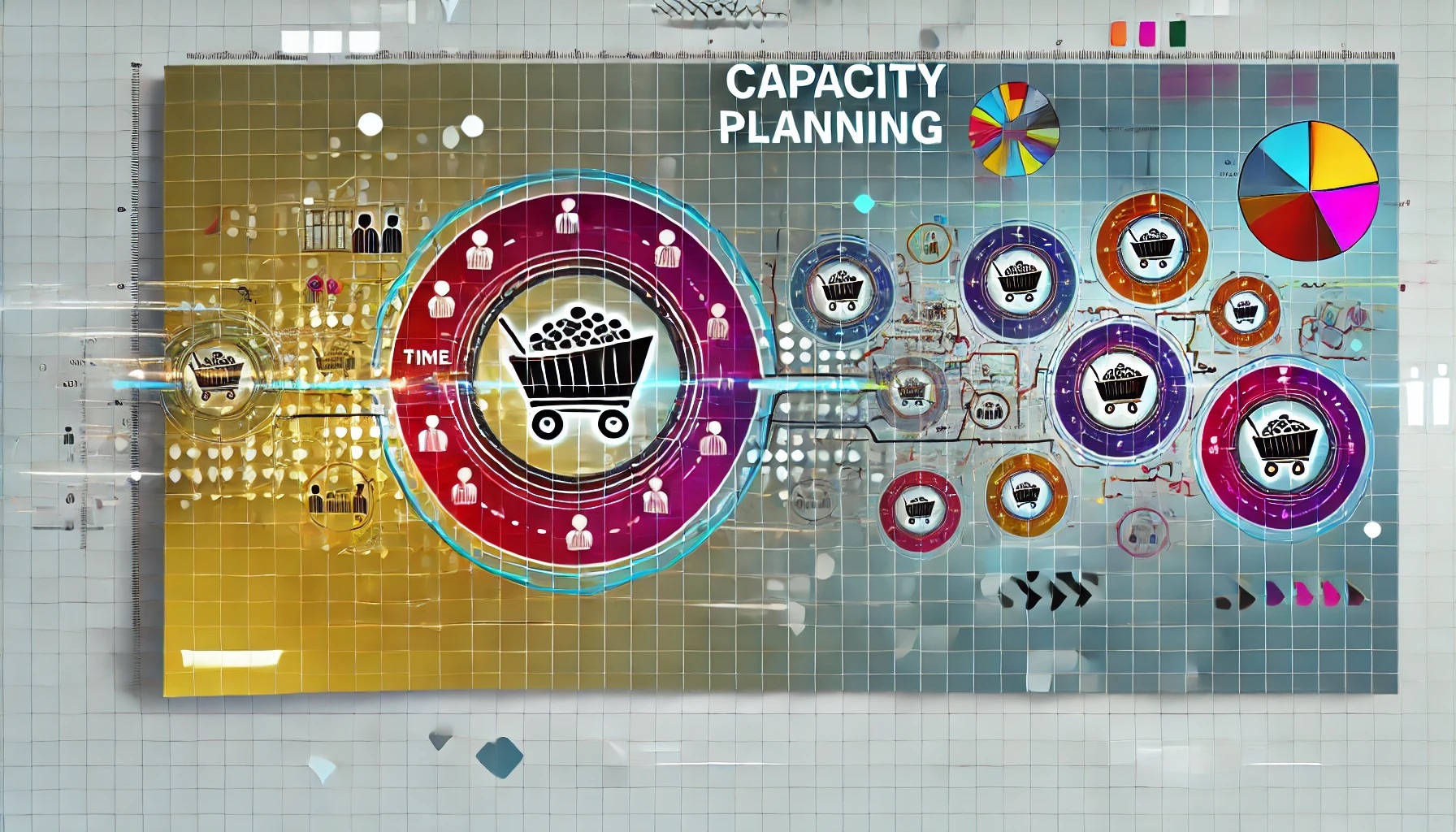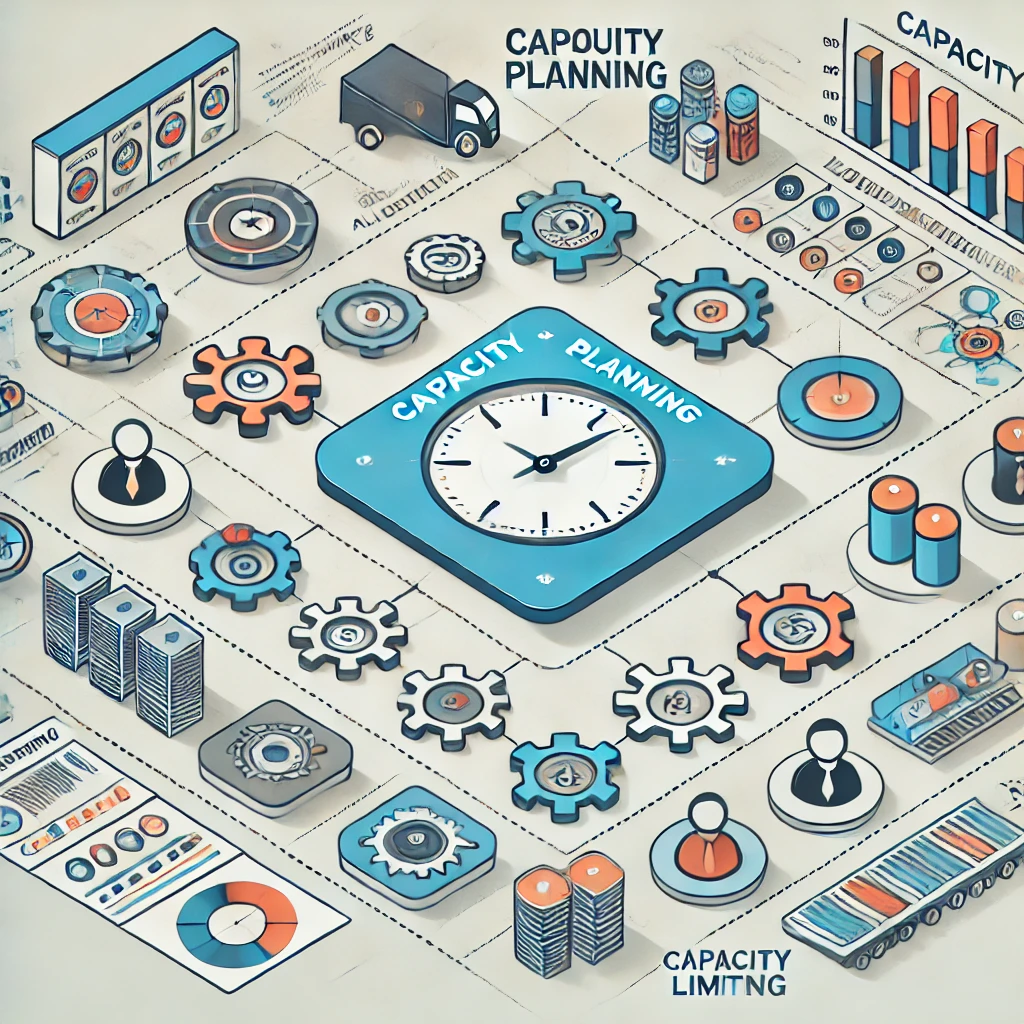Understanding Capacity Planning and Top Templates to Use
 Valcu Denis
Valcu Denis
Capacity planning is a cornerstone of efficient business management, helping organizations maximize resource utilization, minimize costs, and ensure project success. By predicting resource needs and aligning them with business goals, capacity planning enables companies to meet customer demands, improve ROI, and maintain employee satisfaction.
This guide dives into the fundamentals of capacity planning, its benefits, and the steps to create a capacity plan. We’ll also explore top templates to simplify the process, making it accessible for businesses of all sizes.

What Is Capacity Planning?
Capacity planning is the process of determining the production capacity needed to meet fluctuating demands for products or services. It involves analyzing available resources—whether human, material, or technological—to ensure they align with future business needs.
Proper capacity planning avoids common challenges, such as resource shortages or excesses, ensuring a balance between supply and demand.
How Does Capacity Planning Work?
The capacity planning process involves three primary steps:
1. Measure
Start by evaluating your current resource capacity. This includes identifying how much work your team can handle, the capacity of machinery or equipment, and any existing limitations.
2. Analyze
Analyze your findings to determine whether you have surplus capacity, insufficient resources, or are fully utilizing your assets. Understanding this balance is key to optimizing efficiency.
3. Formulate
Develop a detailed plan based on your analysis. This includes decisions like hiring new employees, investing in machinery, or scaling down resources. Formulation also involves cost-benefit analysis to ensure your decisions align with business goals.
Types of Capacity Planning
There are three primary types of capacity planning, each addressing a critical resource area:
1. Product Capacity Planning
Focuses on managing the materials and products needed to meet demand. This type is crucial for manufacturing and eCommerce businesses, where forecasting seasonal and evergreen product demand is essential.
2. Workforce Capacity Planning
Centers around ensuring you have the right number of skilled employees to meet demand. Workforce planning helps identify staffing shortages, skill gaps, and opportunities for redeployment or training.
3. Tool Capacity Planning
Ensures that necessary tools, equipment, and technology are available for production. This includes maintaining machinery, upgrading software, and acquiring new tools to enhance efficiency.
Capacity Planning Strategies
Choosing the right capacity planning strategy depends on your business model, risk tolerance, and product lifecycle. There are three main strategies:
1. Lag Strategy
Focuses on meeting actual demand, not forecasts.
Minimizes costs but risks delays if demand spikes unexpectedly.
2. Lead Strategy
Prepares resources based on demand forecasts.
Enables quick response to increased demand but carries the risk of over-investment.
3. Match Strategy
Balances lead and lag strategies.
Adjusts resources incrementally based on trends and real-time data for flexibility.
Capacity Planning vs. Resource Planning
While these terms are often used interchangeably, they have distinct meanings:
Capacity Planning: Evaluates the overall resource capacity of an organization or department.
Resource Planning: Focuses on individual resource availability, such as staff or equipment, for specific tasks.
In essence, capacity planning takes a strategic, high-level approach, while resource planning is more tactical.
Steps to Create a Capacity Plan
Follow these steps to develop an effective capacity plan:
1. Calculate Current Capacity
Determine your team’s available hours, accounting for daily tasks, meetings, holidays, and unexpected absences. Use this information to estimate how much time is realistically available for project work.
2. Assess Team Skills
Identify your team’s strengths, expertise, and potential skill gaps. This ensures that tasks are assigned to the most qualified individuals, improving efficiency.
3. Analyze Project Requirements
Evaluate the demands of current and upcoming projects. For lead strategies, consider forecasted projects, while lag strategies focus on current workloads.
4. Create Transparency
Use tools like dashboards or spreadsheets to visualize resource availability and project needs. This helps identify discrepancies and ensures informed decision-making.
5. Allocate Resources
Match available resources to project tasks. Monitor allocations regularly and adjust as needed to address changing requirements or unexpected challenges.
Benefits of Capacity Planning
Capacity planning offers numerous advantages, including:
1. Improved Resource Allocation
Ensures the right resources are assigned to the right tasks, maximizing efficiency and productivity.
2. Enhanced Risk Management
Provides a roadmap for handling unexpected challenges, such as supply chain disruptions or increased demand.
3. Increased Customer Satisfaction
Helps avoid delays, stock-outs, and service interruptions, keeping customers happy and loyal.
4. Cost Optimization
Prevents over-investment in unnecessary resources while ensuring sufficient capacity to meet demand.
5. Strategic Growth
Enables businesses to scale effectively by aligning resource availability with long-term goals.
Top Capacity Planning Templates
Here are some ready-to-use templates to streamline your capacity planning process. All you need is Microsoft Excel or Word to customize them for your business.
1. Project Capacity Planning Template
Helps forecast resource requirements for projects.
Tracks team capacity and project timelines.
Download: Smartsheet
2. Simple Capacity Planning Template
Features sections for demand estimation and capacity determination.
Provides real-time insights into resource needs.
Download: Smartsheet
3. Human Resource Capacity Planning Template
Tracks employee workloads and availability.
Prevents overburdening staff and identifies capacity gaps.
Download: Toggl
4. Resource Allocation Template
Manages resource availability for multiple projects.
Tracks scheduling conflicts and utilization rates.
Download: Toggl
5. Team Capacity Planning Template
Combines task tracking with visual charts for easy analysis.
Ideal for managing team demand and resource allocation.
Download: Smartsheet
Final Thoughts
Capacity planning is a vital process for businesses seeking to optimize efficiency and meet customer demands. By accurately forecasting resource needs, businesses can prevent costly mistakes, enhance productivity, and scale effectively.
With the templates and strategies outlined above, you can develop a robust capacity plan that aligns with your organization’s goals. Start planning today to ensure your business is ready to tackle future challenges and seize new opportunities.
Source: How Capacity Planning Works and The Best Templates For It!
Check out our latest post: Step-by-Step Guide to Creating a New Hire Checklist
Subscribe to my newsletter
Read articles from Valcu Denis directly inside your inbox. Subscribe to the newsletter, and don't miss out.
Written by

Valcu Denis
Valcu Denis
Love writing about tech and gaming.